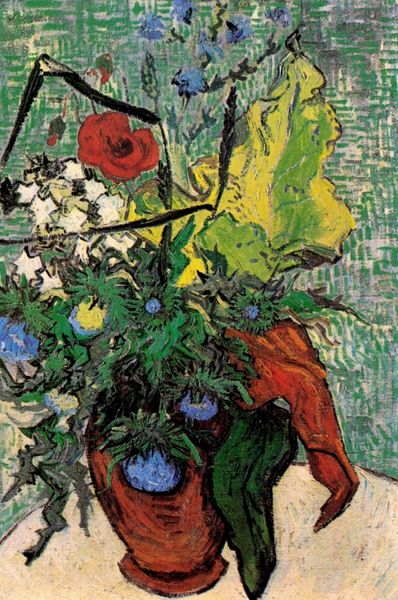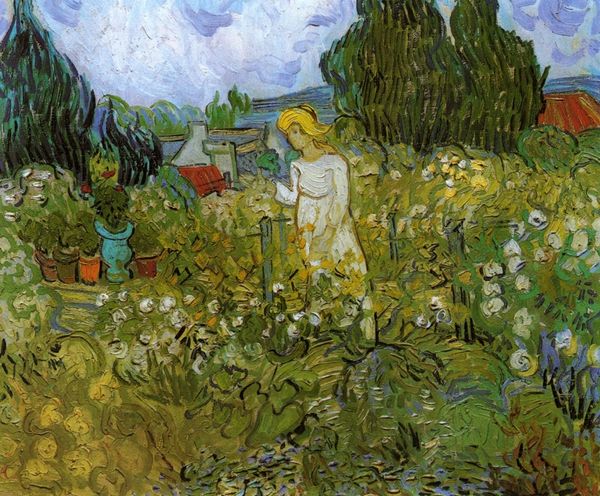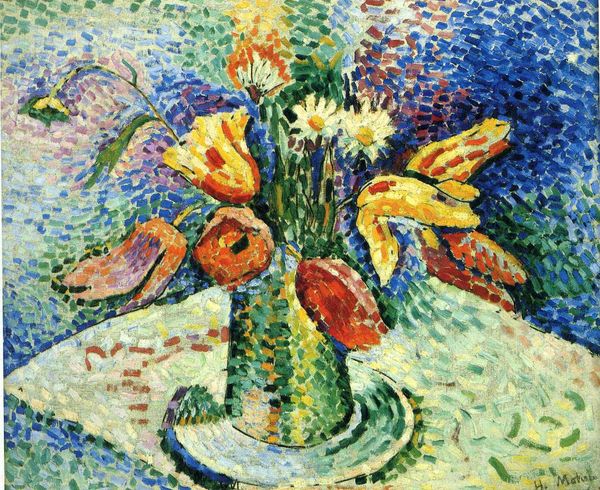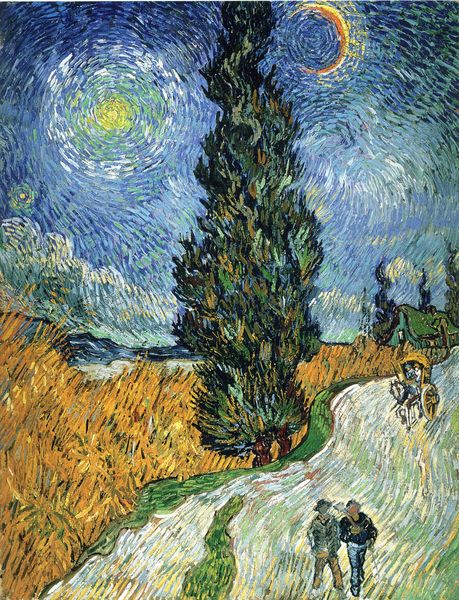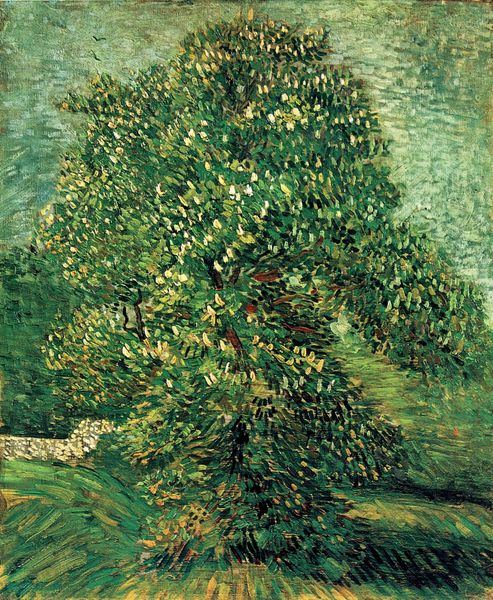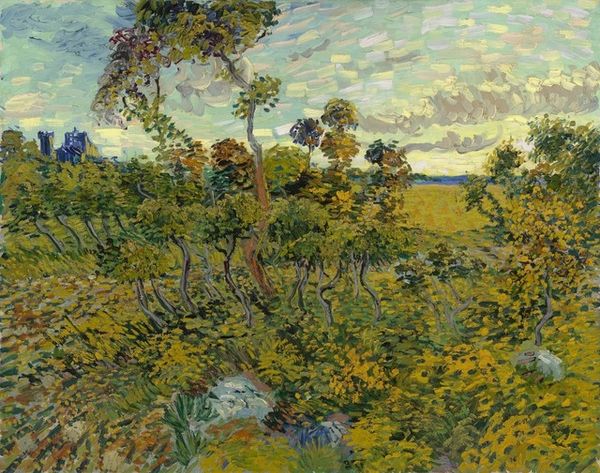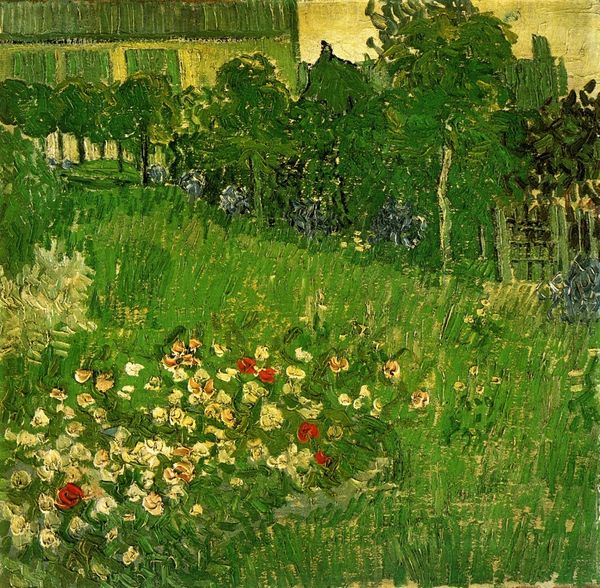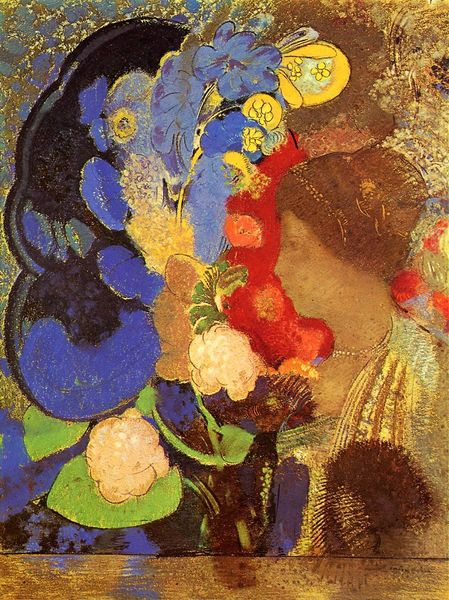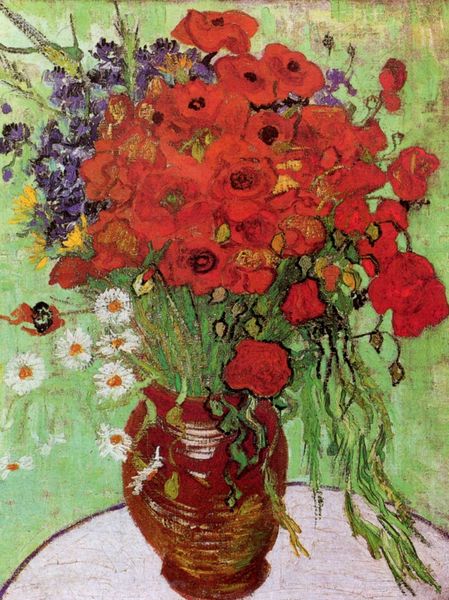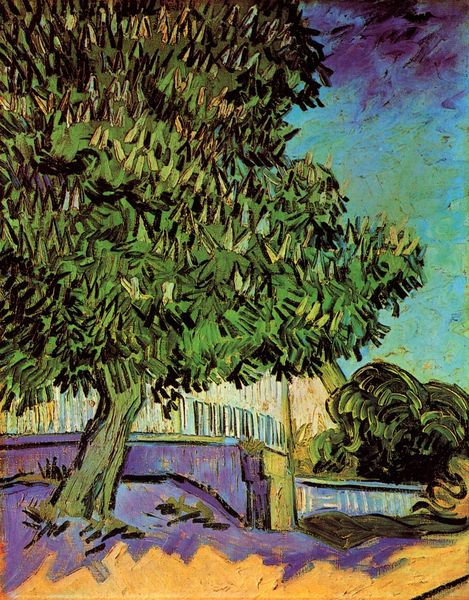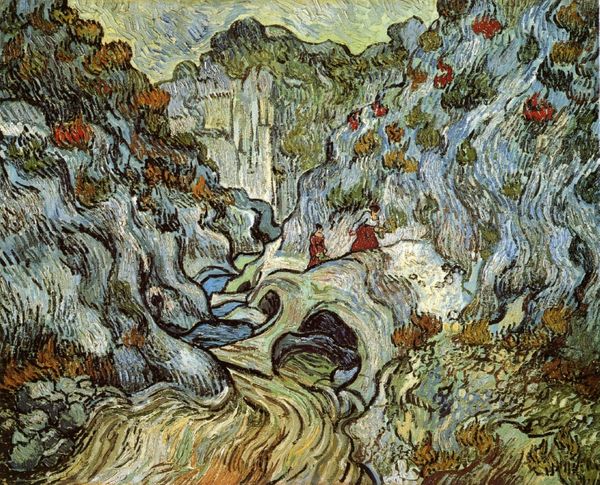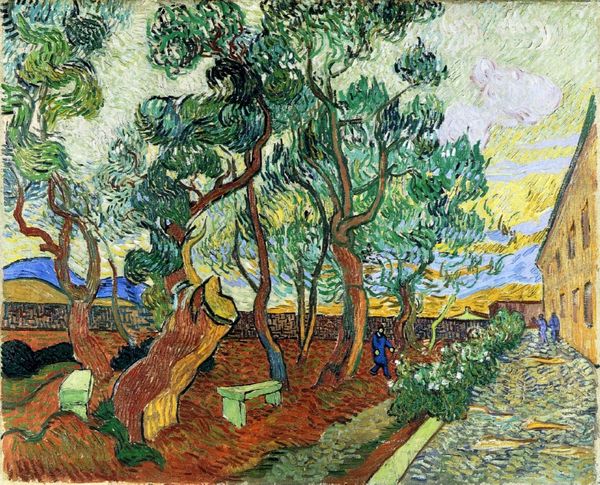
painting, oil-paint, impasto
#
organic
#
painting
#
oil-paint
#
landscape
#
flower
#
impasto
#
organic pattern
#
plant
#
post-impressionism
#
modernism
Dimensions: 72.5 x 91 cm
Copyright: Public domain
Editor: Van Gogh’s “Blossoming Chestnut Branches,” painted in 1890, showcases the vibrancy of spring through oil on canvas. The close-up view of the flowers and leaves almost feels overwhelming, but also captivating. What stands out to you when you consider this work? Curator: Given the time period, and what was happening in Van Gogh’s life, this piece stands as a fascinating commentary on the commodification of nature and mental health. Van Gogh painted this while voluntarily residing at an asylum in Saint-Rémy. Consider the art market of the time and his artistic position. Wasn't nature often romanticized, particularly by landscape painters? Editor: Absolutely. I suppose Van Gogh, by painting these blossoming branches with such raw emotion and visible brushstrokes, rejects that romantic ideal? Curator: Precisely. The swirling brushstrokes in the background, the impasto technique which makes the paint so three-dimensional, and his perspective shifts away from idealized beauty. The politics of imagery surrounding mental illness and the pressure on artists at the time certainly factored into this piece as well. Editor: That’s a perspective I hadn’t considered. It’s almost as though the intensity mirrors his internal state and also a commentary on the structures surrounding it, rather than simply depicting pretty flowers. Curator: Exactly! The art world often places a high demand on artists, one which Van Gogh undoubtedly felt, impacting not only his career, but his well-being. Does that awareness change your view of it? Editor: Definitely! It moves it away from a simple nature scene and towards a powerful, layered statement about society, expectations, and personal struggle. I will consider this socio-political context in future encounters with Post-Impressionism! Curator: Likewise, thinking about the accessibility and language around mental health, it adds another layer of empathy and a critical dimension to his body of work.
Comments
No comments
Be the first to comment and join the conversation on the ultimate creative platform.
